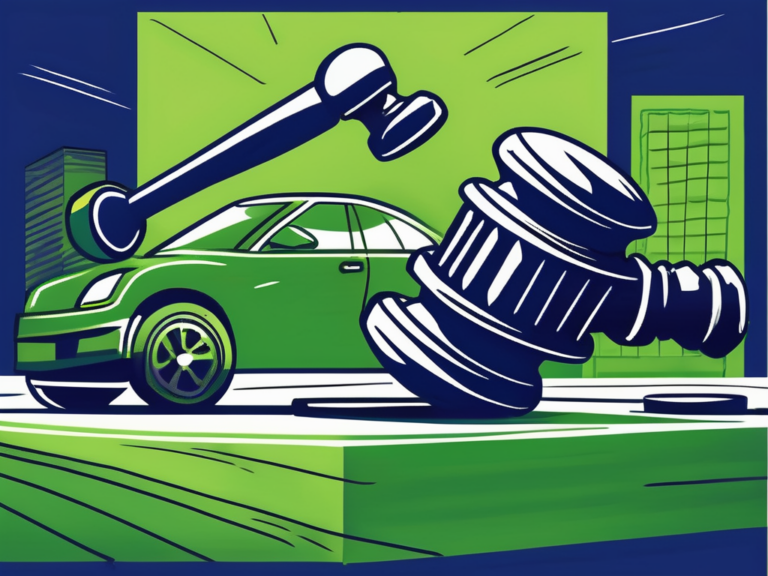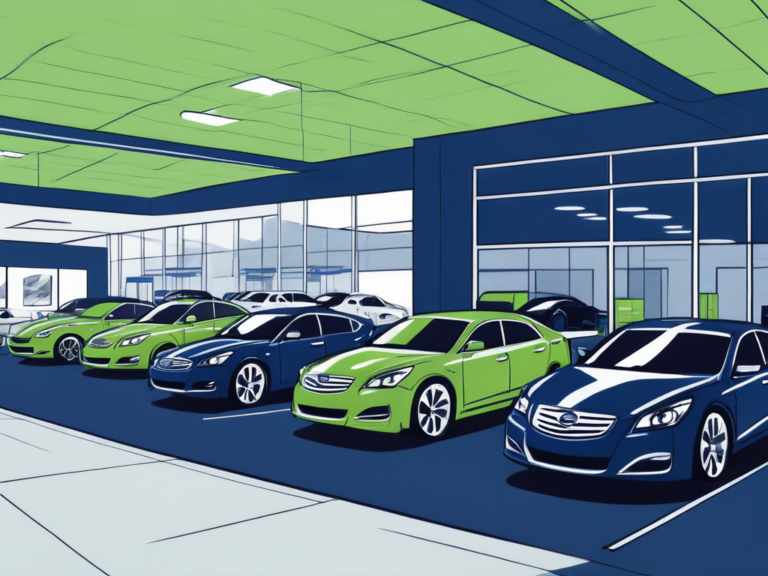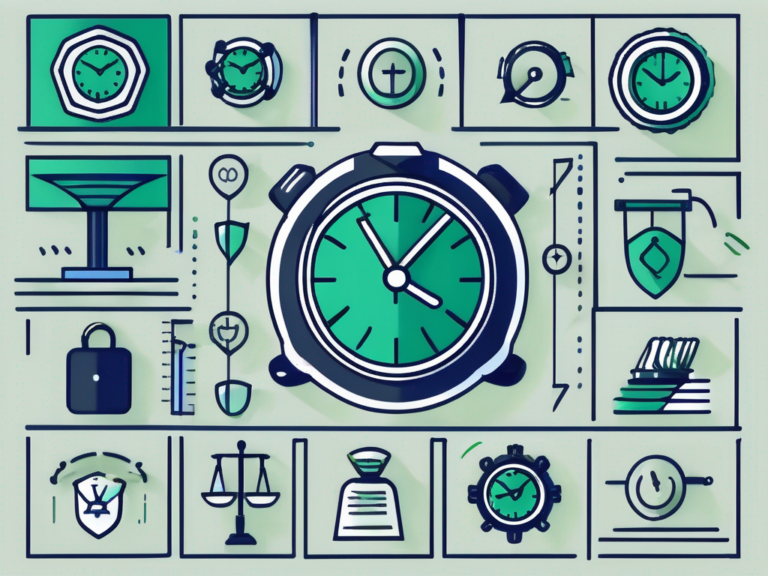Talk to Sales: (401) 200-6026

In the fast-paced environment of a dealership, safety should always be a top priority. From the showroom to the service area, there are potential risks that need to be addressed to ensure the well-being of employees and customers. One of the most effective tools for maintaining safety in a dealership is the use of safety checklists.
Understanding the Importance of Dealership Safety Checklists
Dealership safety checklists play a crucial role in safeguarding everyone within the dealership premises. By systematically outlining safety measures and protocols, these checklists ensure that all necessary precautions are taken and preventive actions are implemented.
Moreover, safety checklists keep safety at the forefront of everyone’s minds, reminding employees of their responsibilities and reducing the chances of accidents and injuries.
But what exactly is included in these safety checklists? Let’s take a closer look.
The Role of Safety Checklists in Dealerships
Safety checklists serve as comprehensive guides that cover various aspects of dealership safety. They cover emergency procedures, hazard identification, and other essential safety measures. By following these checklists, employees can mitigate risks and maintain a safe working environment.
For example, the checklist may include steps for identifying potential hazards in the dealership, such as slippery floors or faulty equipment. It may also outline the proper procedures for handling emergencies, such as fires or medical incidents. By having these protocols in place, employees can respond swiftly and effectively, minimizing the impact of any unforeseen events.
Key Benefits of Implementing Safety Checklists
The benefits of implementing safety checklists in a dealership cannot be overstated. By using these checklists, dealership owners can:
- Minimize accidents and injuries: Safety checklists provide a roadmap to identify potential risks and take preventive actions, reducing the likelihood of accidents and injuries.
- Promote compliance: Following safety checklists ensures that the dealership complies with industry safety regulations, preventing potential fines and penalties.
- Enhance efficiency: Safety checklists optimize workflow by streamlining safety protocols, saving time and resources while ensuring everyone is on the same page.
- Boost employee morale: Prioritizing safety through checklists demonstrates a commitment to employee well-being, resulting in increased job satisfaction and morale.
But there’s more to it than just these benefits. Safety checklists also foster a culture of safety within the dealership. When employees see that their employer values their well-being and takes proactive measures to ensure their safety, it creates a positive work environment. This, in turn, leads to increased productivity and a stronger sense of camaraderie among the team.
Additionally, safety checklists can help identify areas for improvement. By regularly reviewing and updating the checklists based on feedback and new safety guidelines, dealerships can continuously enhance their safety protocols and stay ahead of potential risks.
So, the next time you walk into a dealership, remember that behind the scenes, there are safety checklists in place, meticulously designed to protect everyone involved. From the employees working diligently to the customers browsing the showroom, these checklists ensure that safety remains a top priority.
Essential Components of a Dealership Safety Checklist
When creating a dealership safety checklist, it is crucial to cover all areas of the dealership that pose potential risks. Here are the essential components that should be included:
Safety Measures for the Showroom
The showroom is the face of the dealership, and ensuring the safety of customers and employees is paramount. A safety checklist for the showroom should include protocols for maintaining clean and hazard-free floors, proper handling of display vehicles, and emergency exit procedures.
In addition to these key safety measures, it is important to regularly inspect the showroom for any potential safety hazards, such as loose carpeting or slippery surfaces. Implementing a routine maintenance schedule for safety equipment, such as fire extinguishers and emergency lighting, is also crucial to ensure they are in working order in case of an emergency.
Safety Protocols for the Service Area
The service area is where vehicles are serviced and repaired, and it requires strict adherence to safety protocols. A comprehensive service area safety checklist should cover guidelines for handling hazardous materials, using personal protective equipment, and ensuring proper maintenance of tools and equipment.
Moreover, conducting regular safety training sessions for service area employees on topics like proper lifting techniques and accident prevention can significantly reduce the risk of workplace injuries. It is also essential to have clear procedures in place for reporting any safety concerns or incidents that may arise during daily operations.
Safety Guidelines for the Office Spaces
While offices may not involve the same level of physical risk as other areas, they still require safety protocols. An office safety checklist should include measures such as ergonomics, proper electrical cord management, and guidelines for reporting safety concerns.
Furthermore, ensuring that office spaces are equipped with adequate ventilation, lighting, and ergonomic furniture can help prevent common workplace injuries such as eye strain and back pain. Regularly reviewing and updating safety protocols in office spaces based on employee feedback and industry best practices is essential to maintaining a safe and healthy work environment.
Sell cars on the lot faster with AutoRaptor
Know if we’re the right fit within 10 minutes
Regular Review and Updates of Safety Checklists
Safety is an ongoing commitment, and safety checklists should be reviewed and updated regularly to stay current and effective. Regular reviews allow opportunities for improvement and ensure that new safety regulations are incorporated promptly. It is crucial to prioritize safety in all aspects of operations to create a secure environment for employees and customers alike.
Implementing a culture of safety within an organization involves not only having safety protocols in place but also regularly reviewing and updating them. By dedicating time and resources to this process, businesses demonstrate their commitment to the well-being of their workforce and the public.
The Need for Regular Safety Reviews
Safety risks can evolve over time, and regular safety checkup is necessary to identify and address new potential hazards. By conducting regular safety reviews, dealerships can proactively mitigate risks, preventing accidents before they happen. It is essential to involve employees at all levels in this process to gather diverse perspectives and insights on safety challenges.
Moreover, staying abreast of industry trends and best practices is key to ensuring that safety protocols remain effective and up to date. By benchmarking against other successful safety programs, organizations can continuously improve their own safety checklists and procedures.
Updating Your Safety Checklists: What to Consider
When updating safety checklists, it is essential to consider changes in regulations, feedback from employees, and any incidents or near misses that occurred. By incorporating these insights, checklists can be refined to better address emerging risks and ensure continued safety. Regular training sessions and communication about safety protocols can help reinforce the importance of following these checklists diligently.
Furthermore, leveraging technology solutions can streamline the process of updating safety checklists and tracking compliance. Digital tools can provide real-time updates, automated reminders for safety tasks, and detailed analytics to identify areas for improvement. Embracing innovation in safety management can enhance overall safety performance and reduce the likelihood of workplace incidents.
Implementing Safety Checklists in Your Dealership
Implementing safety checklists in your dealership requires careful planning and communication. Here’s a step-by-step guide to introducing safety checklists:
Steps to Introduce Safety Checklists
- Inform employees: Clearly communicate the purpose and importance of safety checklists to all employees.
- Create checklists: Develop comprehensive checklists that cover all areas of the dealership.
- Provide training: Train employees on how to use the checklists effectively and understand the safety procedures.
- Monitor compliance: Regularly monitor employees’ compliance with safety checklists and provide feedback.
Training Staff on Safety Checklist Procedures
Training is a crucial step in successfully implementing safety checklists. Properly trained staff will understand the importance of the checklists, know how to use them effectively, and be equipped to respond in emergency situations.
Overcoming Common Challenges in Dealership Safety
Despite rigorous safety measures, challenges can still arise in the dealership environment. By proactively addressing potential safety risks, dealerships can create a safer working environment for everyone involved.
Identifying Potential Safety Risks
Regular risk assessments and inspections are vital in identifying potential safety hazards. By actively identifying and addressing risks, dealerships can prevent accidents and create a culture of safety.
Addressing Common Safety Concerns in Dealerships
Dealerships commonly face safety concerns such as slips and falls, ergonomics-related injuries, and vehicle accidents. By implementing proper training programs and safety protocols, dealerships can mitigate these risks and create a safer environment.
In Conclusion
Dealership safety checklists are indispensable tools for maintaining a safe working environment. By understanding their importance, implementing them effectively, and regularly reviewing and updating them, dealerships can ensure the well-being of their employees and customers.
Remember, safety should never be compromised. Implement safety checklists in your dealership right now and make it a priority. Your employees and customers deserve nothing less than a safe and secure environment.
Take the Next Step in Dealership Safety and Efficiency
Now that you understand the critical role safety checklists play in your dealership, it’s time to elevate your operations with AutoRaptor. Our Dealership CRM is designed to keep your sales team engaged and accountable, streamlining your processes and potentially saving your dealership an average of $10.8k per year. Don’t just take our word for it; book a quick demo to see how AutoRaptor can tailor solutions to your unique needs and help you increase sales. Discover if we’re the right fit for you in just 10 minutes.
Subscribe to our Newsletter
Resources to help your dealership convert more leads into sales, retain more customers, and market inventory smarter, straight to your inbox every Sunday.




